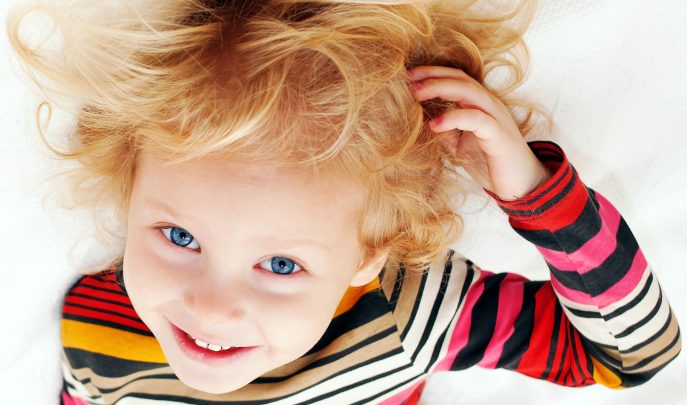Why Every Setting Needs A Multisensory Room, And How To Create One

Multisensory rooms have been shown to improve behaviour, concentration and attention

Information received via the senses is the dominant motivator for babies and children to learn and explore their environments. The more senses are stimulated, the more children learn. In babyhood, many senses are heightened.
There’s a reason why everything a baby touches goes into their mouth: mouths are very sensory places that help babies to learn about the feel of an object, perhaps more so than their hands. These heightened senses continue into toddlerhood and beyond.
Food, for instance, has a much stronger taste during childhood than it does in adulthood as the taste buds are more sensitive – this helps the toddler to learn about food and tastes. Enabling young children to spend time in sensory-rich environments helps to provide them with the best learning opportunities.
It isn’t only learning that is heightened, however; a multisensory environment also helps children feel relaxed and calm, and can be a huge help for new starters or those experiencing separation anxiety.
Some children in your setting may struggle with sensory input, particularly those with Sensory Processing Disorder (SPD) and those on the autistic spectrum. With these children, understanding the effects of the lack of sensory stimulation is a vital part of the practitioner’s role. Children with additional needs can be helped hugely by a proper understanding of the effects of a multisensory environment and how to create one.
Who benefits?
Multisensory rooms can provide both a calming and stimulating environment, depending on the needs of the individual child. Multisensory environments, and specifically multisensory rooms, have been shown to improve behaviour, concentration and attention, making them ideal for children who struggle with these skills, or those with ADHD. They can improve communication, cognitive development and fine motor skills, and can help children who struggle to settle without their parents to feel more safe and secure.
But while multisensory rooms offer a positive effect for children with additional needs, they are of benefit to all children whatever their age. Too often they’re seen as niche, but in my opinion, they are a fantastic addition to any setting.
Create your own
You’ll find some suggestions as to how to go about setting up your own multisensory space in the panel below, but here are some key areas to consider when deciding how to go about filling it.
Texture Here, think about as many different textures as you can: soft, hard, smooth, rough, spiky, crunchy. Utilise everyday objects such as bubble wrap, space blankets, sand paper and shiny satin fabric.
Think about how the floor feels – use gym or foam mat padding for crawlers in certain areas, and consider having a slightly elevated section to facilitate climbing. Ball pits work well with all ages, as do mirrors fixed firmly on the wall; not only do they provide visual stimulation but also smooth, cool textures to touch.
The same is true of a water mat or bed (rather like a large hot water bottle). If the mat is clear, allowing the children to see the water, even better. Lastly, think about providing some buttons to be pushed and levers to be pulled – a board with bolts and doorknobs to be opened and closed works well.
Scent Smell is an important sense; in fact it’s the sense that has closest links with our memory. Certain smells can have a tremendous effect on the brain, causing children to remember certain feelings, environments and people. Smell is one sense that can be incredibly calming when used correctly.
Here, think about using an electric aromatherapy diffuser, lavender bags, scented play-dough (made using a couple of drops of safe aromatherapy oil) and even scratch-and-sniff panels for older children.
Light Used carefully, gentle changes in lighting levels and colour can help children to focus and relax as well as provide creative inspiration.
Think about lighting that changes slowly, fading and brightening and gently shifting colour, like waves in the ocean. Avoid any colour or intensity changes that flash, as these can be overstimulating and cause issues for children at risk of light sensitivity.
Think of colour-changing bulbs, especially if the children can control the colour changes. Rope light strings (securely attached to the wall or ceiling), light projectors, fibre optic light strings and lamps, lava lamps, bubble tubes, and glow-in-the-dark shapes.
You should also think about reducing light: a ‘dark tent’ (made from blackout fabric) can be used as a very calming space, especially with the addition of some red lights. Red light is the only colour wavelength that doesn’t stimulate cortisol (the hormone of alertness) and inhibit melatonin (the hormone of sleep and relaxation).
Sound Most people here immediately think of music. Music can be wonderful at aiding learning and relaxation, especially a form of music known as ‘alpha music’.
Alpha music is specifically composed to calm the brain and put it into a state of heightened learning known as ‘alpha state’. The music is characterised by a repetitive structure at sixty beats per minute (resting pulse rate), minimal instruments are included, and there are never any voices or lyrics; it should be instrumental only.
Alpha music is particularly effective when used in a multisensory environment in wind-down time before sleep. For younger children who still nap in the day it can often help to produce calmer, longer and easier sleep.
Sound in a multisensory environment is much more than music, though; think of the rustle of fabric, the tinkling of a bell, xylophones, pressing bells and buzzers, and even items that can be used as drums for those children who need more stimulation and a faster tempo.
Keep calm
Naturally there is a risk of overstimulation when using a multisensory space. To avoid this, children should always explore the environment at their own pace. This means practitioners should not dictate an order in which the children should explore, or a specific way of using a resource.
If they are finished and showing signs of tiredness or overstimulation, such as crying or clinging to you, then take them away from the area. It is also a good idea to provide a ‘safe retreat’: a small area with little to no sensory stimulation that the children can visit when they need a break.
CHANGING ROOMS
Three things to remember when creating a multisensory area.
1. Keep it small A multisensory room doesn’t have to be large; in fact a smaller space often works better. If you don’t have a room free, consider creating a multisensory corner instead. An area around one-and-a-half metres by one-and-a-half metres provides more than enough space.
2. Make a plan When deciding what to include in your multisensory space, first try brainstorming items you already have that can be included; often you will have more than you realise. The next step is to write a list considering as many senses as possible, remembering to keep the children in your setting in mind: what would they particularly like to have?
3. Stick or twist? Some settings have a fixed sensory space, i.e. items in the space don’t change, providing children with a reassuring constant and sense of safety and predictability. Others cycle through different themes (space, under the sea, in the desert, in the jungle, etc.), rotating the objects that are included so there’s always something new in the environment.
Sarah Ockwell-Smith is a parenting expert, author and mother of four.












